- Home
- Michael Connelly
The Fifth Witness: A Novel Page 16
The Fifth Witness: A Novel Read online
Page 16
I shook my head in frustration while waiting for the chance to speak again. This was indeed a game changer. It had been a completely circumstantial case. Now it was a case involving direct evidence connecting the defendant to the crime.
“Mr. Haller?” the judge said. “You want to respond?”
“I sure do, Judge. I think this goes beyond being sandbagged and I don’t for a moment believe the timing here is happenstance. I would ask that the court tell the prosecution that it is too late to spring this now. I move that this so-called evidence be excluded from the trial.”
“What about delaying the trial?” the judge said. “What if you were given the time to get the analysis done and get up to speed on this?”
“Get up to speed? Judge, this isn’t just about getting our own analysis done. This is about changing the entire defense strategy. The prosecution is seeking to change this from a circumstantial case to a science-based case on the eve of trial. I don’t only need time to do DNA testing. After two months, I now need to rethink the entire case. This is devastating, Your Honor, and it should not be allowed under the basic idea of fair play.”
Freeman wanted a comeback but the judge didn’t allow it. I took that as a good sign until I saw him looking at the calendar hanging on the wall behind the clerk’s corral. That told me he was only willing to ameliorate the situation with time. He was going to allow the DNA into evidence and would just give me extra time to prepare for it.
I sat back down in defeat. Lisa Trammel leaned toward me and desperately whispered, “Mickey, this can’t be. It’s a setup. There’s no way his blood could be on those shoes. You have to believe me.”
I put my hand up to cut her off. I didn’t have to believe a word out of her mouth and that was all beside the point. The reality was that the case was shifting. No wonder Freeman had all her confidence back.
Suddenly I realized something. I quickly stood back up. Too quickly. Pain shot down my torso into my groin and I bent over the defense table.
“Your… Honor?”
“Are you all right, Mr. Haller?”
I slowly straightened up.
“Yes, Your Honor, but I need to add something to the record, if I may.”
“Go ahead.”
“Your Honor, the defense questions the veracity of the prosecution’s claim of learning about this DNA result only this morning. Three weeks ago Ms. Freeman offered my client a very attractive disposition, giving Ms. Trammel twenty-four hours to think it over. Then—”
“Your Honor?” Freeman said.
“Don’t interrupt,” the judge commanded. “Continue, Mr. Haller.”
I had no qualms about breaking my agreement with Freeman not to reveal the disposition negotiations. The gloves were off at this point.
“Thank you, Your Honor. So we get the offer on a Thursday night and then on Friday morning Ms. Freeman mysteriously yanks it right back off the table without explanation. Well, I think we now have that explanation, Judge. She knew back then—three weeks ago—about this supposed DNA evidence but decided to sit on it in order to surprise the defense with it on the eve of trial. And I—”
“Thank you, Mr. Haller. What about that, Ms. Freeman?”
I could see the skin around the judge’s eyes had drawn tight. He was upset. What I had just revealed had the ring of truth to it.
“Your Honor,” Freeman said indignantly. “Nothing could be further from the truth. I have with me in the gallery here Detective Kurlen who will be happy to testify under oath that the DNA report was delivered over the weekend to his office and opened by him shortly after his arrival at seven thirty this morning. He then called me and I brought it to court. The district attorney’s office has not sat on anything and I resent the aspersion directed at me personally by counsel.”
The judge glanced out to the rows of seats and spotted Kurlen, then looked back at Freeman.
“Why did you withdraw the offer a day after making it?” he asked.
The million-dollar question. Freeman seemed unsettled that the judge would carry the inquiry any further.
“Judge, that decision involved internal issues perhaps better not aired in court.”
“I want to understand this, Counsel. If you want this evidence then you better allay my concerns, internal issues or not.”
Freeman nodded.
“Yes, Your Honor. As you know, there is an interim district attorney since Mr. Williams joined the U.S. Attorney General’s Office in Washington. This has resulted in a situation where we don’t always have clear lines of communication and direction. Suffice it to say that on that Thursday I had a supervisor’s approval for the offer I made to Mr. Haller. But on Friday morning I learned from a higher authority in the office that the offer was not approved internally and so I withdrew it.”
It was a load of crap but she had delivered it well and I had nothing that contradicted it. But when she told me the offer was gone that Friday I knew by the tone of her voice that she had something new, something else, and her decision had nothing to do with internal communication and direction.
The judge made his ruling.
“I am going to put back jury selection ten court days. This should give the defense time to have DNA testing of the evidence completed if it chooses to do so. It also allows ample time to consider what strategic change will come with this information. I will hold the state responsible for being totally cooperative in this matter and in getting the biological material to the defense without delay. All parties will be prepared to begin jury selection two weeks from today. Court is adjourned.”
The judge quickly left the bench. I looked down at the empty page on my legal pad. I had just been eviscerated.
Slowly I started packing my briefcase.
“What do we do?” Aronson asked.
“I don’t know yet,” I said.
“Run the test,” Lisa Trammel said urgently. “They’ve got it wrong. It can’t be his blood on my shoes. This is unreal.”
I looked at her. Her brown eyes fervent and believable.
“Don’t worry. I’ll figure something out.”
The optimism tasted sour in my mouth. I glanced over at Freeman. She was looking through files in her briefcase. I sauntered over and she gave me a dismissive look. She wasn’t interested in hearing my tale of woe.
“You look like things just went exactly the way you wanted them to go,” I said.
She showed nothing. She closed her case and headed toward the gate. Before pushing through she looked back at me.
“You want to play hardball, Haller?” she said. “Then you have to be ready to catch.”
Nineteen
The next two weeks went by quickly but not without progress. The defense rethought and retooled. I had an independent lab confirm the state’s DNA findings—at a rush cost of four grand—and then assimilated the devastating evidence into a view of the case that allowed for the science to be correct as well as my client’s innocence to be possible, if not probable. The classic setup defense. It would be an additional and natural dimension to the straw-man gambit. I began to believe it could work and my confidence began to rebuild. By the time delayed jury selection finally started, I had some momentum going and rolled it into the effort, actively looking for the jurors who might lend themselves to believing the new story I was going to spin for them.
It wasn’t until the fourth day of jury selection that yet one more Freeman fastball came whistling at my head. We were nearing completion of the panel and it was one of those rare times when both prosecution and defense were happy with the jury’s makeup, but for different reasons. The panel was well stocked with working-class men and women. Home owners who came from two-income households. Few had college diplomas and none had advanced degrees. Real salt-of-the-earth people and this was a perfect composition for me. I was going for people who lived close to the edge in the tough economy, who felt the threat of foreclosure at all times, and would have a hard time looking at a banker as a sympathetic vic
tim.
On the other hand, the prosecution asked detailed financial questions of each prospective juror and was looking for hard workers who wouldn’t see someone who stopped paying her mortgage as a victim, either. The result, until the morning of the fourth day, was a panel full of jurors neither side objected to and who we each thought we could mold into our own soldiers of justice.
The fastball came when Judge Perry called for the midmorning break. Freeman immediately stood up and asked the judge if counsel could meet in chambers during the break to discuss an evidentiary issue that had just come up. She asked if Detective Kurlen could join the meeting. Perry granted the request and doubled the break time to a half hour. I then followed Freeman, who followed the court reporter and the judge into chambers. Kurlen came in last and I noticed that he was carrying a large manila envelope with red evidence tape on it. It was bulky and appeared to have something heavy inside. The paper envelope was the real giveaway, though. Biological evidence was always wrapped in paper. Plastic evidence bags trapped air and humidity and could damage biologicals. So I knew going in that Freeman was about to drop another DNA bomb on me.
“Here we go again,” I said under my breath as I entered the chambers.
The judge moved behind his desk and sat down, his back to a window that looked south toward the hills over Sherman Oaks. Freeman and I took side-by-side seats opposite the desk. Kurlen pulled a chair over from a nearby table and the court reporter sat on a stool to the judge’s right. Her steno machine was on a tripod in front of her.
“We’re on the record here,” the judge said. “Ms. Freeman?”
“Judge, I wanted to meet with you and counsel for the defense as soon as possible because I am anticipating that once again Mr. Haller will howl at the moon when he hears what I have to say and what I have to show.”
“Then let’s get on with it,” Perry said.
Freeman nodded to Kurlen and he started peeling back the tape on the evidence envelope. I said nothing. I noticed that he had a rubber glove on his right hand.
“The prosecution has come into possession of the murder weapon,” Freeman stated matter-of-factly, “and plans to introduce it as evidence as well as make it available to the defense for examination.”
Kurlen opened the envelope, reached in and brought out a hammer. It was a claw hammer with a brushed steel head and a circular striking surface. It had a polished redwood handle tipped in black rubber at the end. I saw a notch at twelve o’clock on the strike face and knew it likely corresponded with the skull impressions cataloged during the autopsy.
I stood up angrily and walked away from the desk.
“Oh, come on,” I said in full outrage. “Are you kidding me?”
I looked at the wall of shelved codebooks Perry had at the far side of the room, put my hands on my hips in indignation and then turned back to the desk.
“Judge, excuse my language, but this is bullshit. She can’t do this again. To spring this—what, four days into jury selection and a day before opening statements? We have most of the box already picked, we are possibly going to start tomorrow and she’s suddenly laying the supposed murder weapon on me?”
The judge leaned back in his seat as if distancing himself from the hammer Kurlen was holding.
“You better have a good and convincing story, Ms. Freeman,” he said.
“I do, Judge. I could not bring this forward until this morning and I am more than willing to explain why if—”
“You allowed this!” I said, interrupting and pointing a finger at the judge.
“Excuse me, Mr. Haller, but don’t you dare point your finger at me,” he said with restraint.
“I’m sorry, Judge, but this is your fault. You let her get away with the bullshit DNA story and after that there’s no reason for her not to—”
“Excuse me, sir, but you had better proceed cautiously. You are about five seconds away from seeing the inside of my holding cell. You do not point your finger or address a superior court judge as you have. Do you understand me?”
I turned back to the codebooks and took a deep breath. I knew I had to get something out of this. I had to come out of this room with the judge owing me something.
“I understand,” I finally said.
“Good,” Perry said. “Now come back over here and take a seat. Let’s hear what Ms. Freeman and Detective Kurlen have to say and it better be good.”
Reluctantly, I returned like a chastised child and dropped into my seat.
“Ms. Freeman, let’s hear it.”
“Yes, Your Honor. The weapon was turned in to us late Monday afternoon. A land—”
“Great!” I said. “I knew it. So you wait until four days into jury selection before you decide to—”
“Mr. Haller!” the judge barked. “I have lost all patience with you. Do not interrupt again. Continue, Ms. Freeman. Please.”
“Of course, Your Honor. As I said, we received this at the LAPD’s Van Nuys Division late Monday afternoon. I think it would be best if Detective Kurlen runs you through the chain of custody.”
Perry gestured to the detective to begin.
“What happened was that a landscaper working in a yard on Dickens Street near Kester Avenue found it that morning, lodged in a hedge near the front of his client’s house. This is in the street that runs behind WestLand National. The house is approximately two blocks from the rear of the bank. The landscaper who found the hammer is from Gardenia and had no idea about the murder. But thinking the tool belonged to his client, he left it on the porch for him. The home owner, a man named Donald Meyers, didn’t see it until he came home from work about five o’clock that afternoon. He was confused because he knew it was not his hammer. However, he then remembered reading articles about the Bondurant murder, at least one of which indicated the murder weapon might be a hammer and that it had not been found yet. He called his landscaper and got his story, then he called the police.”
“Well, you’ve told us how you got it,” Perry said. “You haven’t explained why we’re hearing about it three days later.”
Freeman nodded. She was ready for this and took over the narrative.
“Judge, we obviously had to confirm what we had and the chain of custody. We immediately turned it over to the Scientific Investigation Division for processing and only received the lab reports yesterday evening after court.”
“And what do those reports conclude?”
“The only fingerprints on the weapon belonged to—”
“Wait a minute,” I said, risking the judge’s ire again. “Can we just refer to it as the hammer? Calling it ‘the weapon’ on the record is a bit presumptuous at this point.”
“Fine,” Freeman said before the judge could respond. “The hammer. The only fingerprints on the hammer belonged to Mr. Meyers and his landscaper, Antonio Ladera. However, two things tie it solidly into the case. A small spot of blood found on the neck of the hammer has been conclusively matched through DNA testing to Mitchell Bondurant. We rushed this test with an outside vendor because of the protest counsel made over the precautions taken with the other test. The hammer was also turned over to the medical examiner’s office for comparison to the wound patterns on the victim. Again, we have a match. Mr. Haller, you can refer to it as the hammer or the tool or whatever you want. But I’m calling it the murder weapon. And I have copies of the lab reports to turn over to you at this time.”
She reached into the manila envelope, removed two paper-clipped documents and handed them to me with a satisfied smile on her face.
“Well, that’s nice of you,” I said in full sarcasm. “Thank you very much.”
“Oh, and there’s also this.”
She reached into the envelope again and withdrew two eight-by-ten photos, giving one to the judge and one to me. It was a photo of a workbench with tools hung on a pegboard on the wall behind it. I knew it was the workbench from Lisa Trammel’s garage. I had been there.
“This is from Lisa Trammel’s garage.
It was taken on the day of the murder during the search of the premises under the authority of a court-ordered search warrant. You will notice that one tool is missing from the pegboard’s hooks. The open space created by this corresponds to the dimensions of a claw hammer.”
“This is crazy.”
“SID has identified the recovered hammer as a Craftsman model manufactured by Sears. This particular hammer is not sold separately. It comes only in the two-hundred-thirty-nine-piece Carpenter’s Tool Package. From this photograph we have identified more than a hundred other tools from that package. But no hammer. It’s not there because Lisa Trammel threw it into the bushes after leaving the scene of the crime.”
My mind was racing. Even with a defense based on the theory that the defendant was set up, there was a law of diminishing returns. Explaining away the blood drop on the shoe was one thing. Explaining away your client’s ownership of and connection to the murder weapon was not just a second thing. There was an exponential increase in the odds against setup as each piece of evidence is revealed. For the second time in three weeks the defense had been handed a devastating blow and I was left almost speechless. The judge turned to me. It was time to respond but I had no comeback that was worthy.
“This is very compelling evidence, Mr. Haller,” he prompted. “You have anything to say?”
I had nothing but I picked myself up off the mat before he reached the ten count.

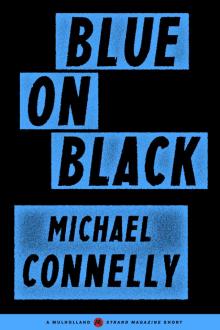 Blue on Black
Blue on Black The Black Ice (1993)
The Black Ice (1993) Crime Beat: A Decade of Covering Cops and Killers
Crime Beat: A Decade of Covering Cops and Killers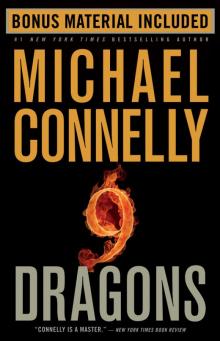 Nine Dragons
Nine Dragons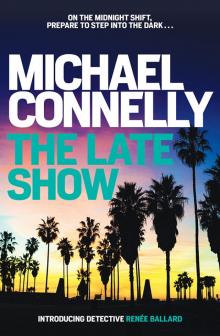 The Late Show
The Late Show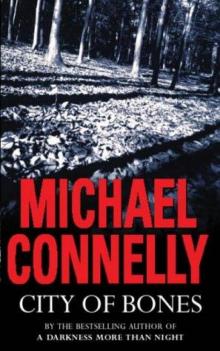 City of Bones
City of Bones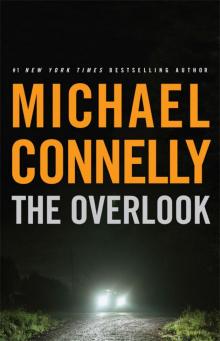 The Overlook
The Overlook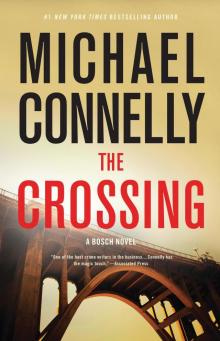 The Crossing
The Crossing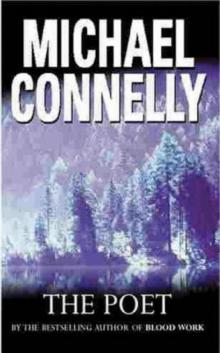 The Poet (1995)
The Poet (1995)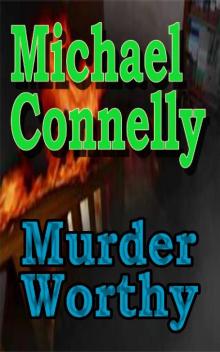 Murder Worthy
Murder Worthy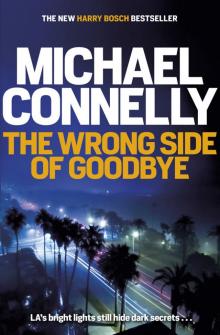 The Wrong Side of Goodbye
The Wrong Side of Goodbye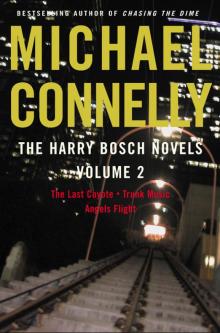 Harry Bosch Novels, The: Volume 2
Harry Bosch Novels, The: Volume 2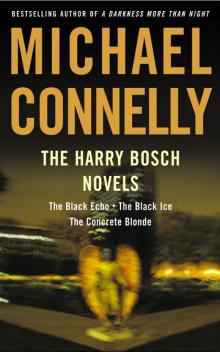 The Harry Bosch Novels
The Harry Bosch Novels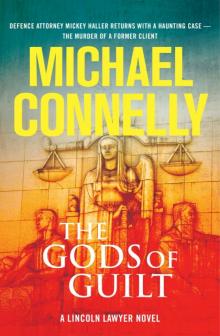 The Gods of Guilt
The Gods of Guilt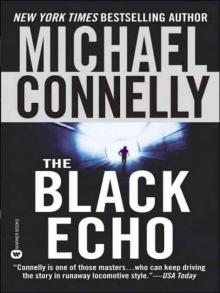 The Black Echo
The Black Echo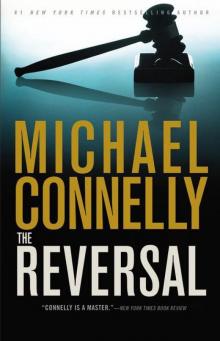 The Reversal
The Reversal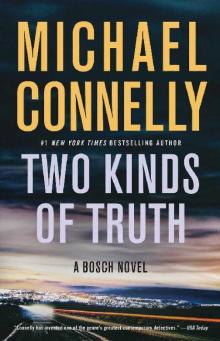 Two Kinds of Truth
Two Kinds of Truth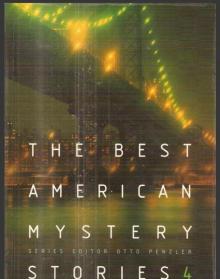 The Best American Mystery Stories 2003
The Best American Mystery Stories 2003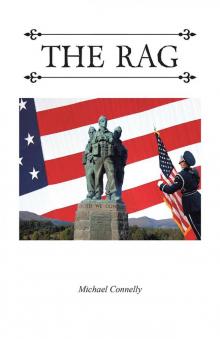 The Rag
The Rag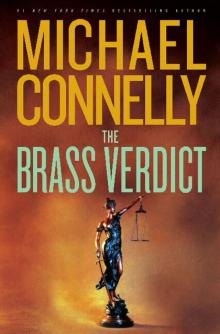 The Brass Verdict
The Brass Verdict The Black Echo (1992)
The Black Echo (1992)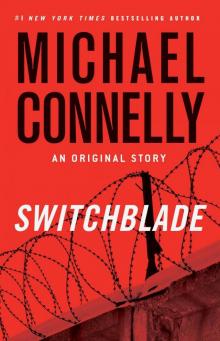 Switchblade
Switchblade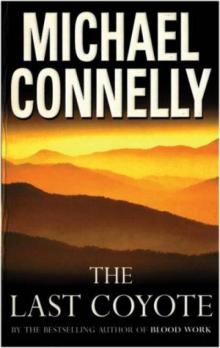 The Last Coyote
The Last Coyote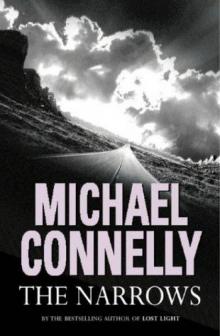 The Narrows
The Narrows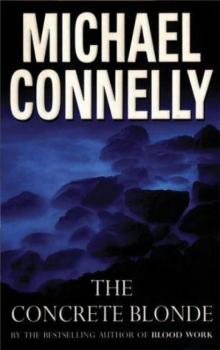 The Concrete Blonde (1994)
The Concrete Blonde (1994)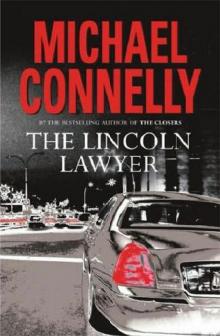 THE LINCOLN LAWYER (2005)
THE LINCOLN LAWYER (2005)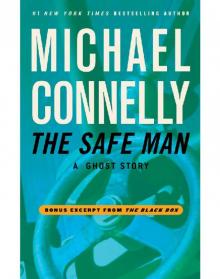 The Safe Man: A Ghost Story
The Safe Man: A Ghost Story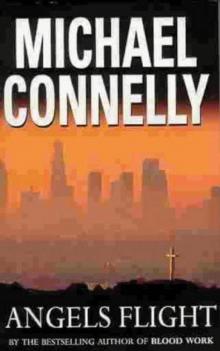 Angels Flight (1998)
Angels Flight (1998) Void Moon
Void Moon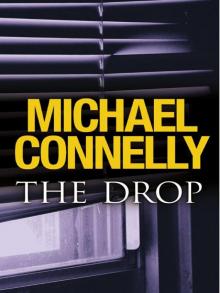 The Drop
The Drop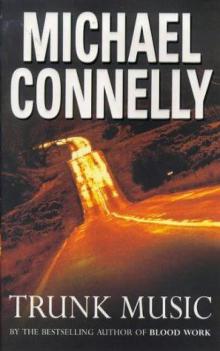 Trunk Music
Trunk Music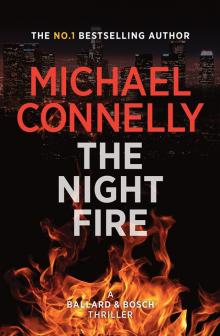 The Night Fire
The Night Fire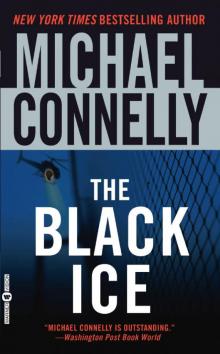 The Black Ice
The Black Ice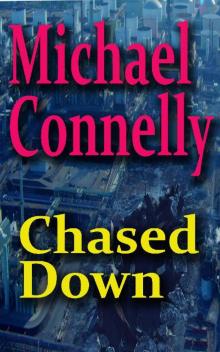 Chased Down
Chased Down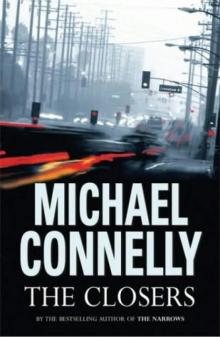 The Closers
The Closers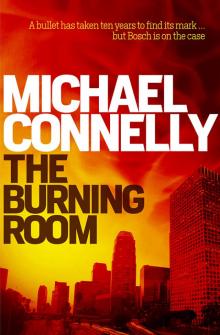 The Burning Room
The Burning Room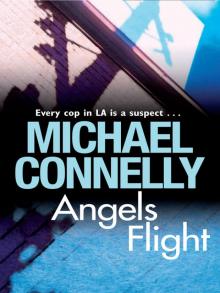 Angels Flight
Angels Flight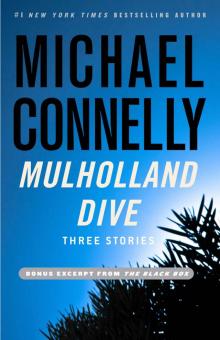 SSC (2012) Mulholland Drive
SSC (2012) Mulholland Drive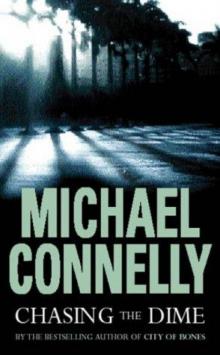 Chasing the Dime
Chasing the Dime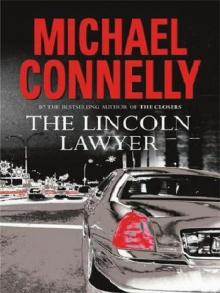 The Lincoln Lawyer
The Lincoln Lawyer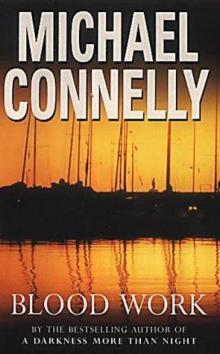 Blood Work (1998)
Blood Work (1998)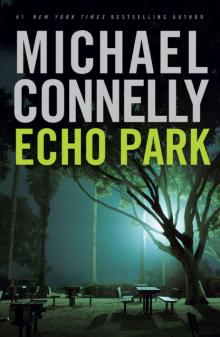 Echo Park
Echo Park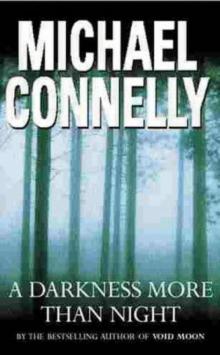 A Darkness More Than Night
A Darkness More Than Night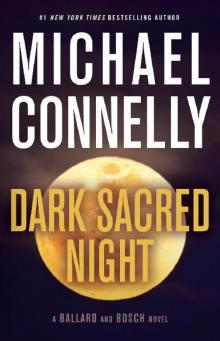 Dark Sacred Night - Ballard and Bosch #1;Renée Ballard #2
Dark Sacred Night - Ballard and Bosch #1;Renée Ballard #2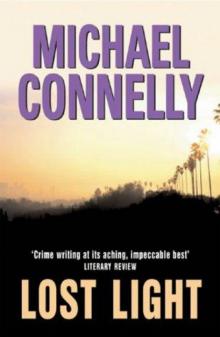 Lost Light
Lost Light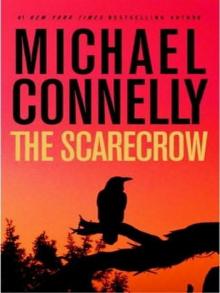 The Scarecrow
The Scarecrow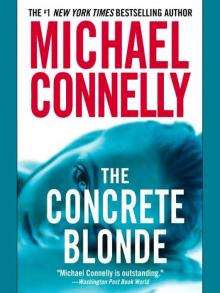 The Concrete Blonde
The Concrete Blonde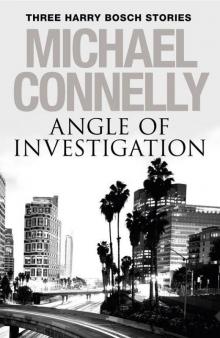 Angle of Investigation
Angle of Investigation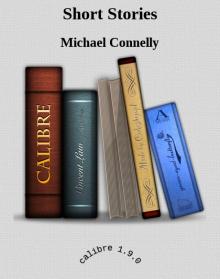 Suicide Run: Three Harry Bosch Stories
Suicide Run: Three Harry Bosch Stories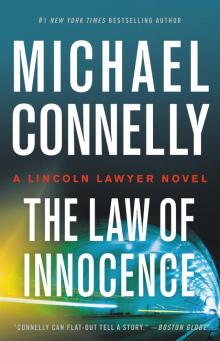 The Law of Innocence
The Law of Innocence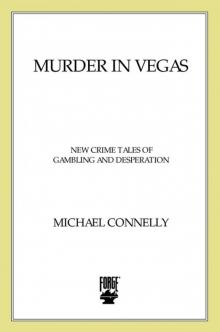 Murder in Vegas: New Crime Tales of Gambling and Desperation
Murder in Vegas: New Crime Tales of Gambling and Desperation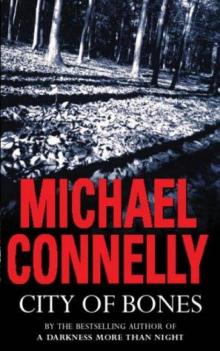 City Of Bones (2002)
City Of Bones (2002)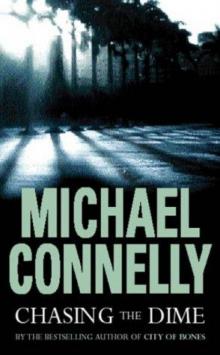 Chasing the Dime (2002)
Chasing the Dime (2002)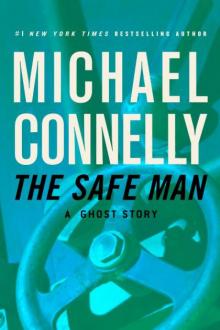 The Safe Man
The Safe Man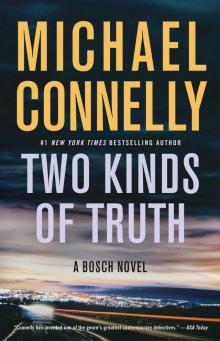 Two Kinds of Truth (A Harry Bosch Novel)
Two Kinds of Truth (A Harry Bosch Novel)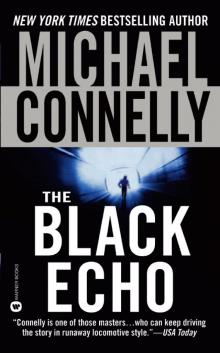 Harry Bosch 01 - The Black Echo
Harry Bosch 01 - The Black Echo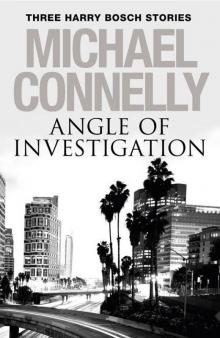 Angle of Investigation: Three Harry Bosch Short Stories
Angle of Investigation: Three Harry Bosch Short Stories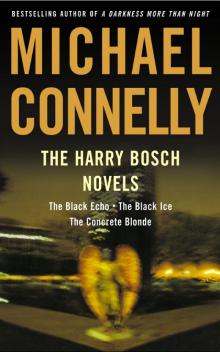 The Harry Bosch Novels Box Set 1
The Harry Bosch Novels Box Set 1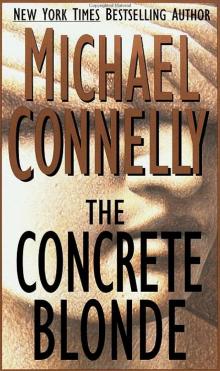 The Concrete Blonde hb-3
The Concrete Blonde hb-3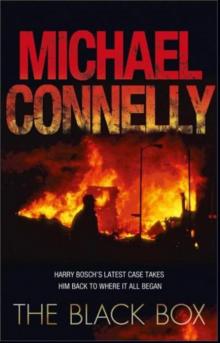 The Black Box hb-18
The Black Box hb-18 Short Stories
Short Stories The Black Ice hb-2
The Black Ice hb-2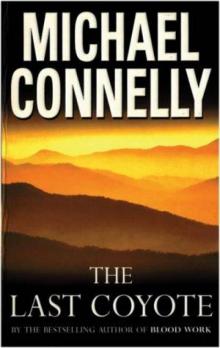 The Last Coyote (1995)
The Last Coyote (1995)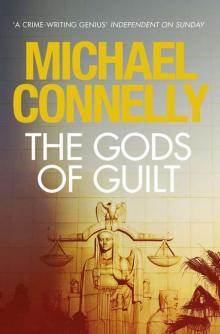 The Gods of Guilt mh-5
The Gods of Guilt mh-5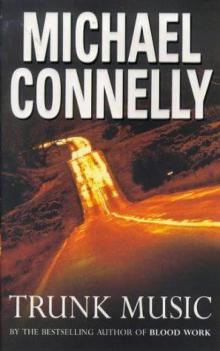 Trunk Music (1996)
Trunk Music (1996)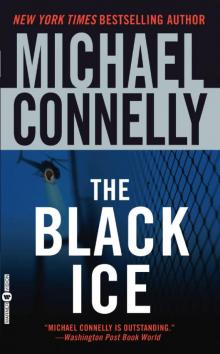 Harry Bosch 02 - The Black Ice
Harry Bosch 02 - The Black Ice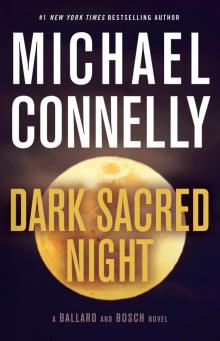 Dark Sacred Night
Dark Sacred Night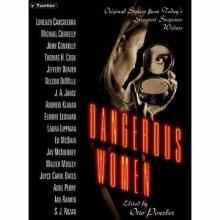 Cielo Azul
Cielo Azul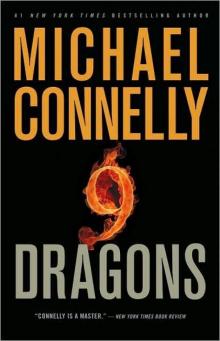 9 Dragons
9 Dragons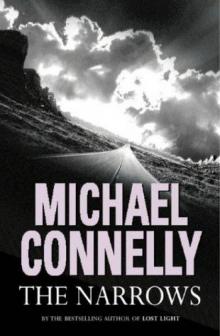 The Narrows (2004)
The Narrows (2004)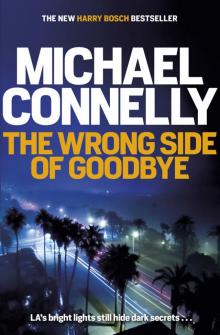 The Wrong Side of Goodbye (Harry Bosch Series)
The Wrong Side of Goodbye (Harry Bosch Series)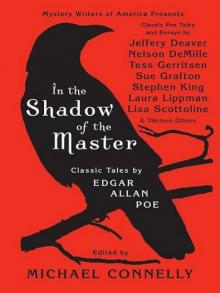 In The Shadow Of The Master: Classic Tales by Edgar Allan Poe
In The Shadow Of The Master: Classic Tales by Edgar Allan Poe Void Moon (1999)
Void Moon (1999)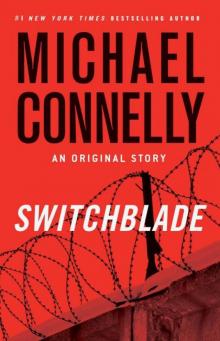 Switchblade: An Original Story (harry bosch)
Switchblade: An Original Story (harry bosch) The Harry Bosch Novels, Volume 2
The Harry Bosch Novels, Volume 2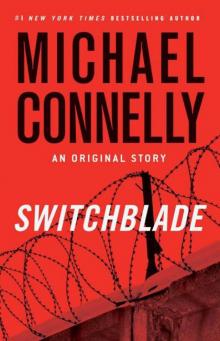 Switchblade: An Original Story
Switchblade: An Original Story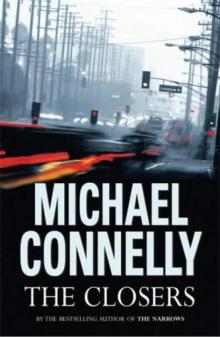 The Closers (2005)
The Closers (2005)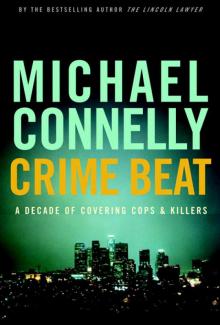 Crime Beat
Crime Beat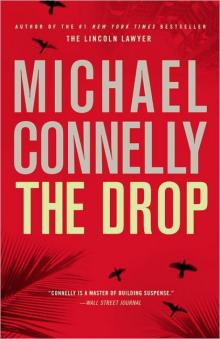 The Drop hb-17
The Drop hb-17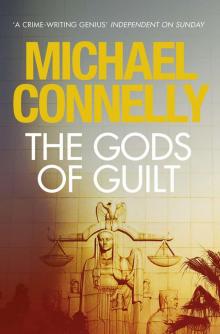 The Gods of Guilt (Mickey Haller 5)
The Gods of Guilt (Mickey Haller 5)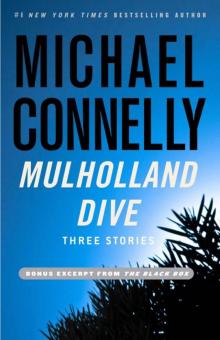 Mulholland Dive: Three Stories
Mulholland Dive: Three Stories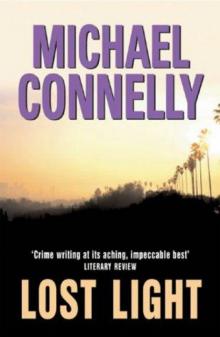 Lost Light (2003)
Lost Light (2003)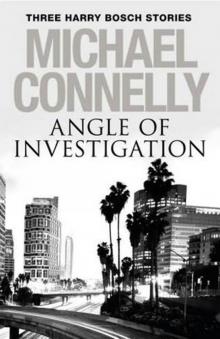 Angle of Investigation: Three Harry Bosch Stories
Angle of Investigation: Three Harry Bosch Stories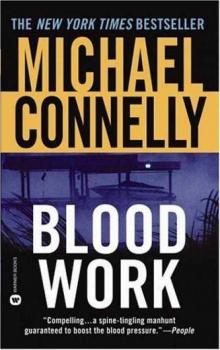 Blood Work
Blood Work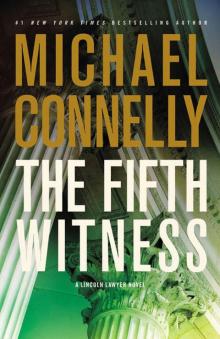 The Fifth Witness: A Novel
The Fifth Witness: A Novel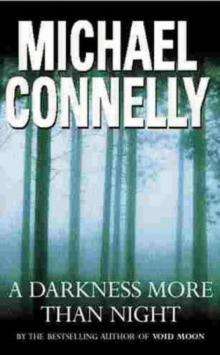 A Darkness More Than Night (2000)
A Darkness More Than Night (2000)